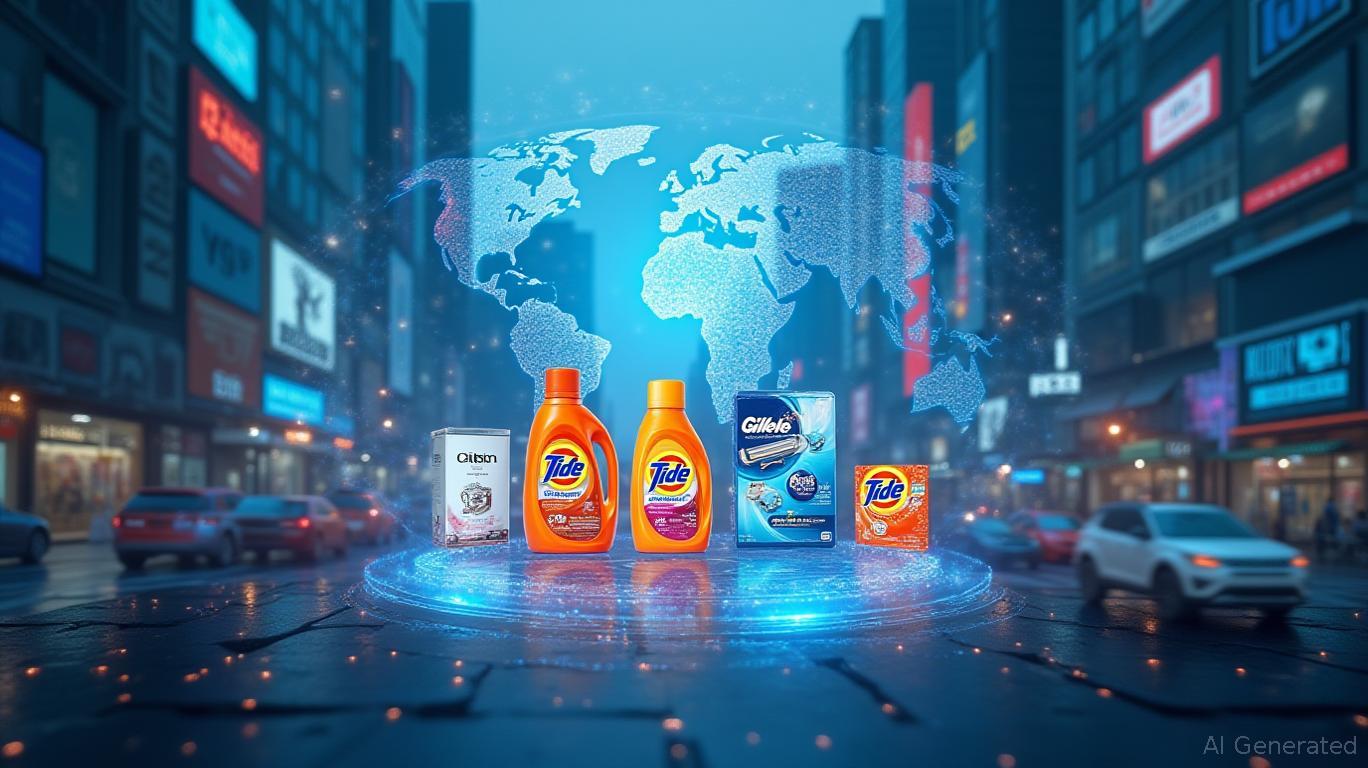Procter & Gamble's Restructuring: A Necessary Reset or a Risky Gamble?
As Procter & Gamble (P&G) navigates a landscape of tariff headwinds, inflation, and shifting consumer preferences, its recent restructuring—cutting 7,000 jobs, exiting underperforming brands, and consolidating operations—marks a bold effort to realign its $80 billion business for profitability. But investors face a critical question: Will these moves secure long-term resilience, or are they a risky retreat from innovation and market share?

The Case for Cost-Cutting: Efficiency or Retreat?
P&G's restructuring targets non-manufacturing roles, trimming 15% of its administrative and managerial workforce. This move aims to streamline decision-making, reduce redundancies, and free capital for high-margin core brands like Tide and Pampers. The company also plans to exit underperforming markets (e.g., Argentina) and divest brands such as Vidal Sassoon in China. By focusing on its top 50 brands—responsible for 95% of sales—P&G hopes to boost margins, counter $600 million in annual tariff costs, and regain pricing power.
The strategy has merit. Streamlining operations can lower overhead, while digitization (e.g., AI-driven supply chains) could enhance agility. The company projects $1.5 billion in annual savings by 2026, which, if achieved, would offset tariff pressures and support mid-single-digit EPS growth.
Strategic Divestitures: Prudent or Overly Cautious?
By shedding low-growth brands and markets, P&G is prioritizing scale and profitability. For example, exiting hair care in certain regions may reduce complexity, but it also risks ceding ground to competitors in niche markets. The shift toward core brands like SK-II (which grew 10% in 2024) and sustainable products like the Tide EcoBox aligns with trends, but over-reliance on a shrinking portfolio could limit future growth.
Crucially, P&G is doubling down on innovation in high-margin categories. The launch of Native deodorant, which aims to grow from $50 million to $750 million in North America, exemplifies this focus. However, investors must monitor whether the restructuring stifles broader innovation ecosystems. While R&D roles are not directly cut, reductions in marketing or supply chain teams could indirectly hinder product launches or market responsiveness.
Risks Lurking Beneath the Surface
The restructuring's risks are twofold. First, R&D capacity remains a concern. Though job cuts exclude manufacturing and R&D teams, support functions like data analytics or digital innovation—critical for bringing ideas to market—are vulnerable. The broader biopharma sector's layoffs in early 2025, which slowed drug development timelines, serve as a cautionary tale. If P&G's efficiency drive erodes agility in product testing or consumer insights, its ability to compete in fast-moving markets like personal care could wane.
Second, geopolitical and macroeconomic uncertainty looms. The $600 million tariff hit in 2026 underscores how trade tensions could derail recovery. Meanwhile, U.S. consumer sentiment has hit near-historic lows, with households cutting discretionary spending. P&G's sales in Baby Care—a core category—declined 1% in early 2025, signaling vulnerability to demand shocks.
Investment Thesis: Hold for Now
P&G's restructuring is a necessary response to short-term pressures, but its success hinges on execution. The stock has underperformed peers this year, falling 2% versus a 1% rise in the S&P 500, reflecting investor skepticism about growth durability.
Hold recommendation: Investors should await clarity on two metrics:
1. Innovation pipeline health: Watch for new product launches in high-growth areas like sustainability and premium skincare.
2. Sales recovery in core categories: A rebound in Baby Care and Fabric & Home Care, which account for 40% of sales, would signal resilience.
Risks remain. If tariffs escalate further or consumer spending weakens, P&G's cost savings may not offset margin pressures. Conversely, a revival in emerging markets or a breakthrough in digital supply chain efficiency could justify a re-rating.
Conclusion
P&G's restructuring is a calculated bet on discipline over diversification. While the moves address immediate challenges, investors must weigh whether the trade-off between short-term cost savings and long-term growth potential is sustainable. Until P&G demonstrates sales momentum in core markets and preserves innovation vitality, a cautious hold stance is prudent. The reset could be a masterstroke—or a premature retreat into a shrinking world of commoditized brands. The next 12 months will tell.

Comments
No comments yet